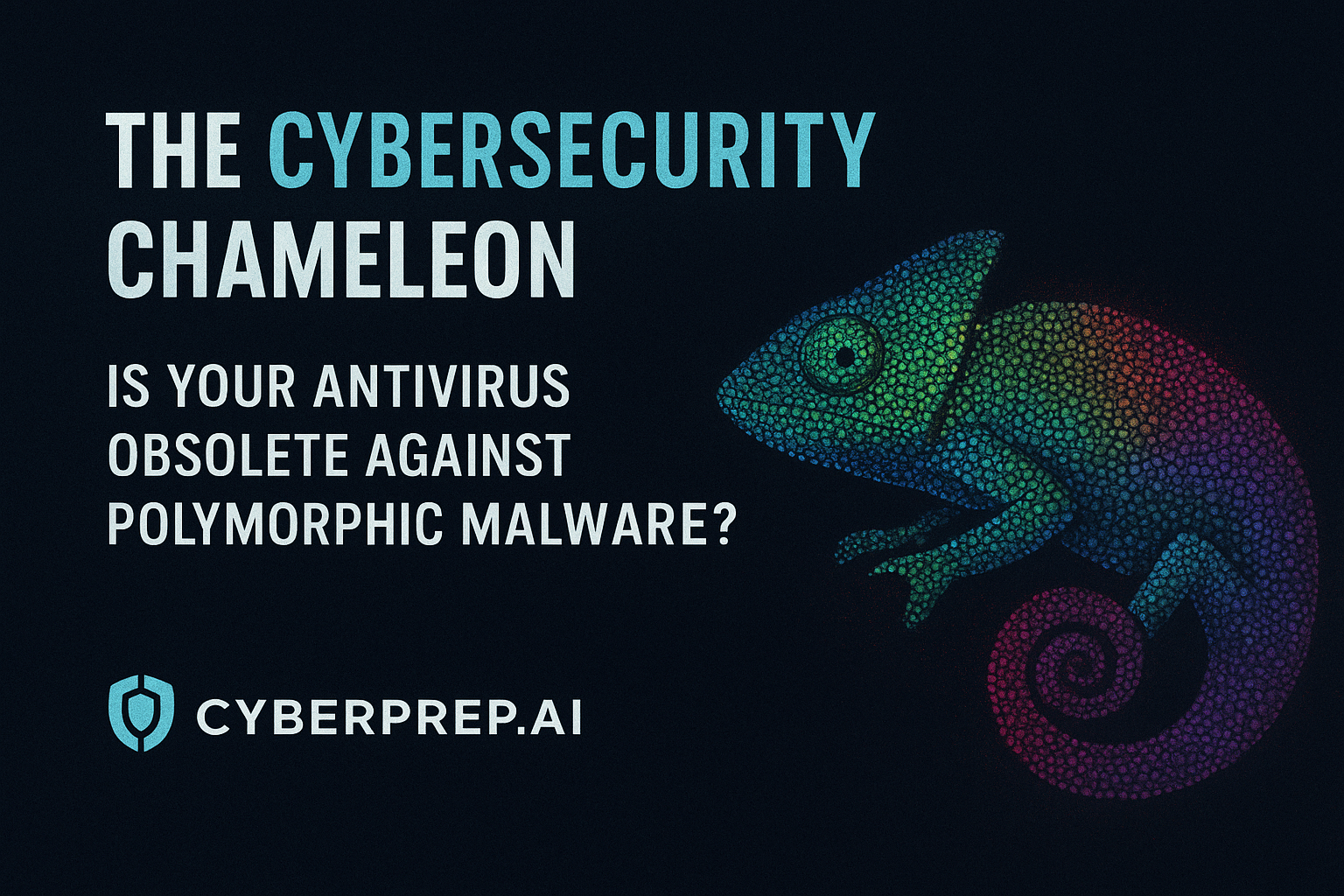Welcome back to the Cyberprep.ai blog. In our ongoing exploration of the “AI Arms Race,” we’ve discussed how AI amplifies both attack and defense. Today, we’re focusing on a specific type of threat where AI’s influence is particularly dangerous: Polymorphic Malware.
This isn’t your parents’ computer virus. Polymorphic malware is a sophisticated, ever-changing chameleon, designed to constantly alter its code and appearance, making it a nightmare for traditional antivirus solutions. The critical question for organizations worldwide in 2025 is: Is your current antivirus strategy truly capable of defending against these shape-shifting threats, or has it become obsolete?
At Cyberprep.ai, we believe true preparedness means adapting your defenses to match the evolving capabilities of your adversaries.
Beyond Signatures: The Polymorphic Malware Challenge
Traditional antivirus (AV) software largely relies on signature-based detection. This means it identifies malware by matching its unique “signature” (a specific pattern of code) against a database of known threats. It’s effective against known viruses, but entirely useless against something new or something that constantly changes.
Polymorphic malware leverages complex encryption and obfuscation techniques to literally rewrite parts of its own code with each infection, or even with each execution. While its core malicious function remains the same, its “outer shell” continuously mutates.
Imagine trying to catch a criminal by their fingerprints, but every time they commit a crime, they magically change their fingerprints. That’s the challenge.
The AI Connection: Supercharging the Chameleon
The rise of generative AI has given polymorphic malware a terrifying upgrade:
- Automated Mutation: AI can now generate an infinite number of unique malware variants at machine speed, far beyond what human malware authors could ever achieve.
- Adaptive Evasion: AI can learn how detection systems work and then modify the malware to bypass those specific defenses, making it more resilient and harder to track.
- Targeted Obfuscation: AI can tailor the obfuscation techniques to specific target environments, making the malware particularly effective against certain systems or security products.
This means that by the time a traditional AV database updates with a new signature, the polymorphic malware has already changed its form and is continuing its spread undetected.
Why Your Antivirus Might Be Obsolete (and What’s Next)
If your organization primarily relies on signature-based antivirus, you are likely vulnerable to polymorphic threats. It’s like having a security guard who only recognizes faces he’s seen before, while the attacker constantly wears a new disguise.
So, what’s next for effective defense?
- Behavioral Analysis (Heuristics): Modern security solutions move beyond signatures. They analyze the behavior of code (what it tries to do, what files it touches) rather than just its appearance. If a program suddenly tries to encrypt all your files, that’s suspicious behavior, regardless of its “signature.”
- Machine Learning & AI-Driven Detection: Sophisticated AI models can identify subtle patterns and anomalies in code and system processes that indicate malicious intent, even in never-before-seen malware variants. This is crucial for detecting polymorphic threats.
- Endpoint Detection and Response (EDR): EDR solutions provide continuous monitoring of endpoints, gathering comprehensive data on system activities, allowing for rapid detection, investigation, and response to advanced threats, including polymorphic malware.
- Proactive Threat Hunting: Security teams actively search for threats within their networks, rather than waiting for alerts.
Adapting Your Defenses with Cyberprep.ai
The arms race against polymorphic malware demands a proactive and intelligent defense. Relying on outdated solutions is no longer an option.
This is where Cyberprep.ai provides your strategic advantage. Our advanced training programs empower your security teams to understand the nuances of polymorphic malware, implement next-generation detection and response tools, and leverage the power of AI to protect your organization. We move beyond basic antivirus advice to build a comprehensive Preparedness Framework that can detect the threats that constantly change their form.
Don’t let your defenses be outsmarted by a cybersecurity chameleon. Upgrade your preparedness for the evolving threat landscape.Visit cyberprep.ai to learn how to future-proof your cybersecurity strategy against polymorphic malware and other AI-driven threats.

